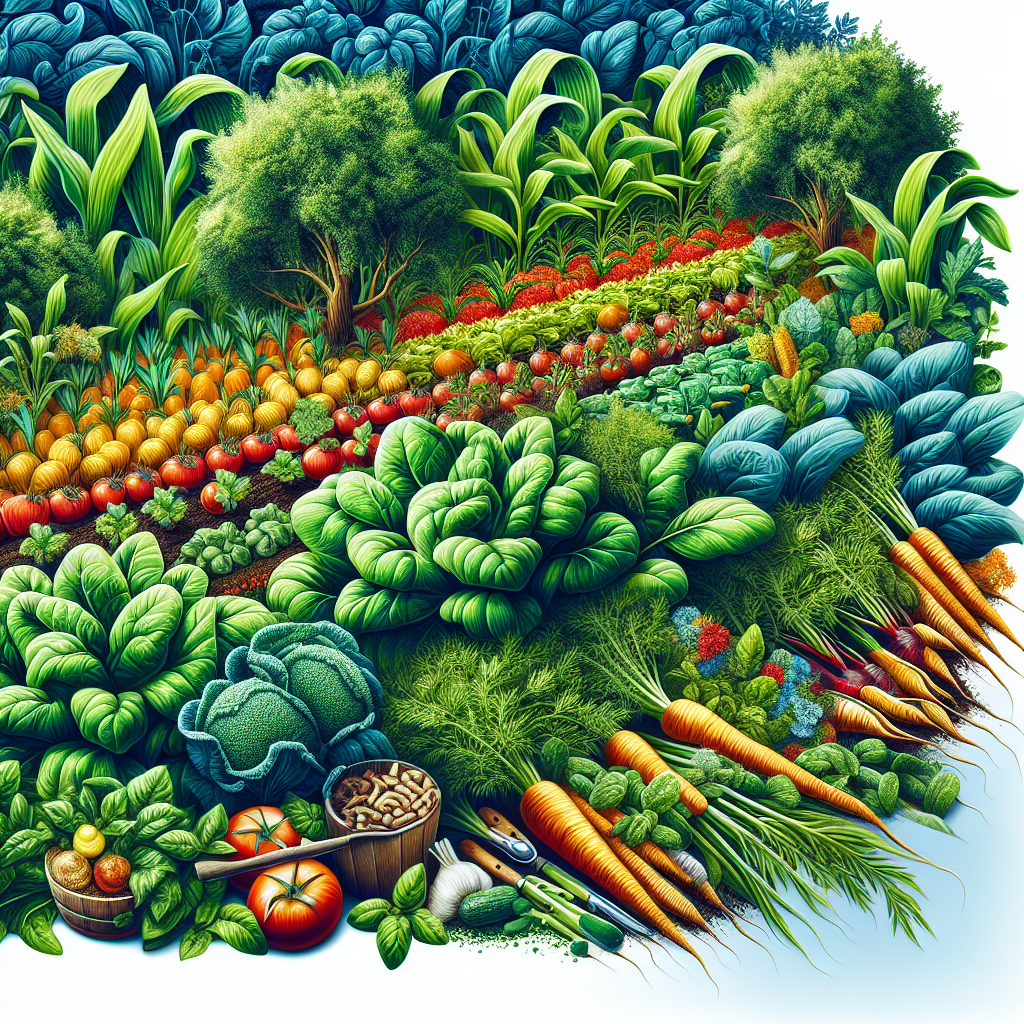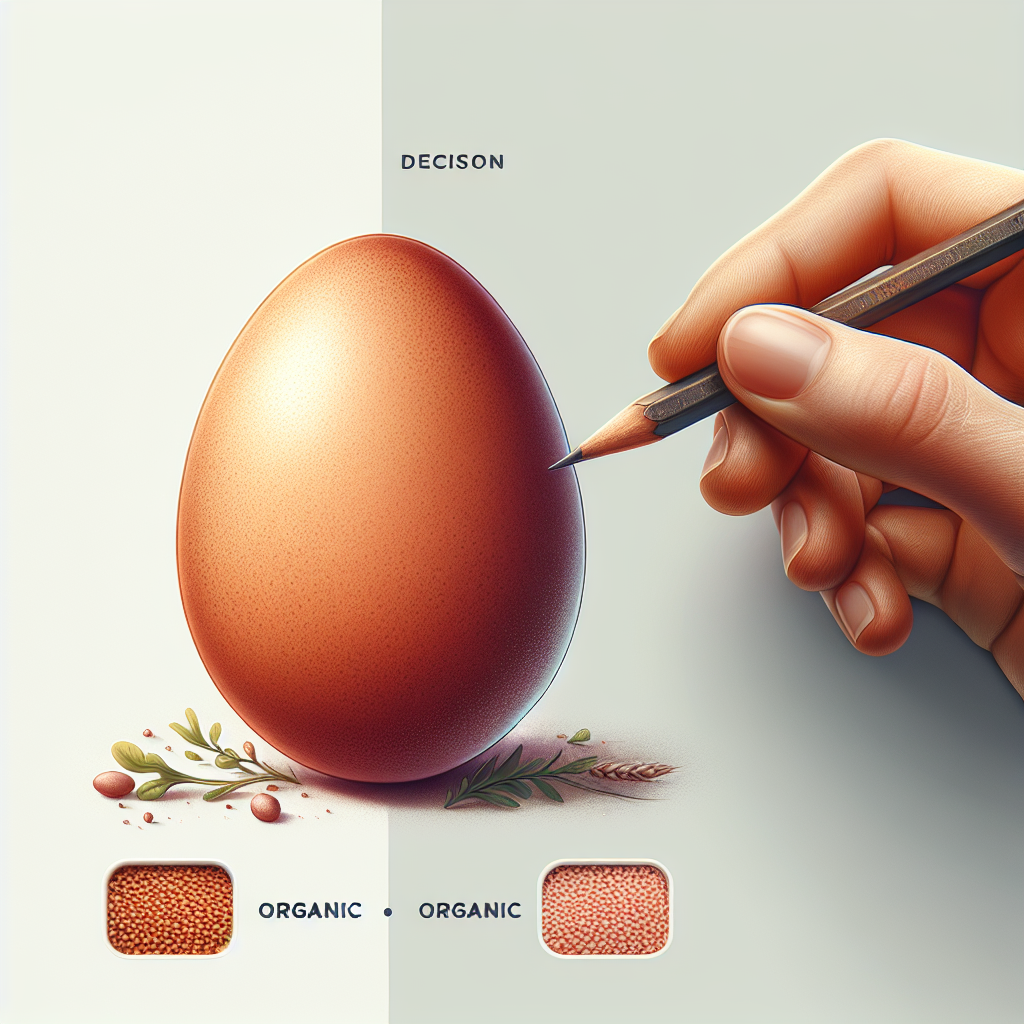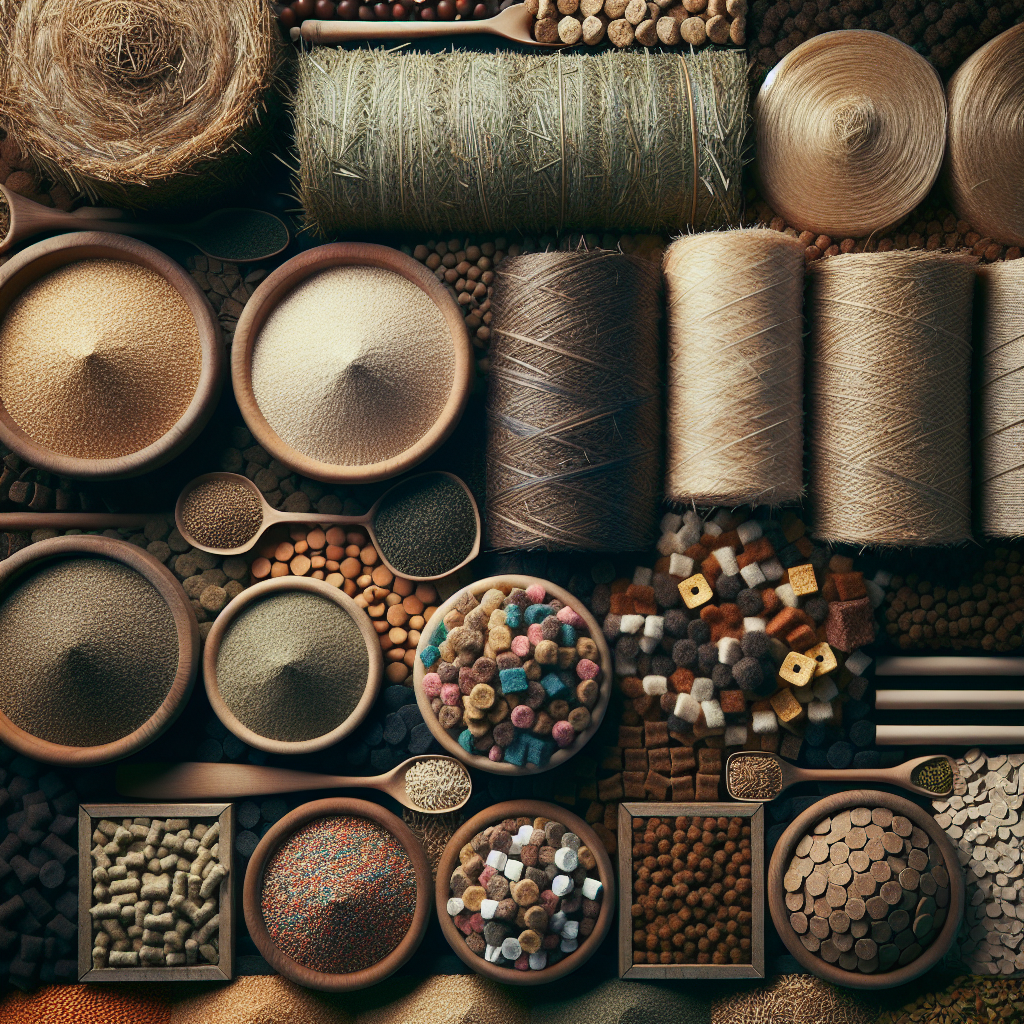Are you looking for ways to make the most out of your kitchen scraps while also reducing your feed costs? We all know how food waste can be a challenge, but with a little creativity and resourcefulness, you can find surprising ways to utilize those scraps effectively. In this article, we will explore some simple yet ingenious ideas on how to give your kitchen scraps a second life, benefiting both your wallet and your livestock. Get ready to discover a world of possibilities that will transform your scraps into valuable feed supplements.
Benefits of Utilizing Kitchen Scraps
Reducing waste
One of the primary benefits of utilizing kitchen scraps is the significant reduction in waste. Instead of throwing away leftover food and vegetable peels, these scraps can be repurposed to provide nutrition and sustenance for animals. By diverting kitchen scraps from landfills, you can contribute to reducing the overall waste produced by your household.
Saving money on feed
Feeding animals can be a significant expense for livestock and poultry owners. However, by incorporating kitchen scraps into their diet, you can save money on commercial feed. Kitchen scraps can serve as a cost-effective alternative, providing an additional source of nutrition without the need for expensive feed purchases.
Improving animal health
By supplementing animal feed with kitchen scraps, you can enhance the overall health and well-being of your livestock or poultry. These scraps contain essential nutrients, vitamins, and minerals that can contribute to better growth, increased productivity, and improved immune function. Adding a varied and balanced diet by utilizing kitchen scraps can lead to healthier animals.
Environmental sustainability
The utilization of kitchen scraps for animal feed supports environmental sustainability. Farming and livestock operations often require extensive resources, including land, water, and fossil fuels. By reducing the need for commercial feed production and waste disposal, utilizing kitchen scraps can help mitigate the environmental impact associated with intensive farming practices.
Identifying Suitable Kitchen Scraps
Non-toxic scraps
When selecting kitchen scraps for your animals, it is crucial to ensure that they are non-toxic. Certain foods, such as chocolate, onions, and avocados, can be harmful or toxic to animals. Avoid feeding these scraps to your animals and focus on non-toxic options that provide nutritional value instead.
Avoiding harmful additives
To ensure the safety and well-being of your animals, it is important to avoid feeding them kitchen scraps that contain harmful additives. Scraps that have been seasoned with excessive salt, spices, or artificial flavorings should be avoided. Stick to plain, unseasoned scraps without any additives for optimal animal health.
Balanced nutrient composition
To meet the nutritional requirements of your animals, it is essential to provide a balanced diet. When selecting kitchen scraps, consider their nutrient composition and aim for variety. Incorporate scraps that offer a range of macronutrients (proteins, carbohydrates, and fats) and micronutrients (vitamins and minerals) to ensure a well-rounded diet for your animals.
Avoiding spoiled food
While it is tempting to utilize all your kitchen scraps, it is important to avoid feeding animals spoiled or rotten food. These scraps can potentially cause gastrointestinal issues and harm the overall health of your animals. Regularly inspect the quality of your kitchen scraps and discard any spoiled or moldy food.
Preparation and Processing of Kitchen Scraps
Sorting and cleaning scraps
Before feeding kitchen scraps to animals, it is crucial to sort and clean them properly. Remove any inedible parts or packaging and wash the scraps thoroughly to remove dirt, bacteria, and potential contaminants. This ensures the safety and hygiene of the kitchen scraps for animal consumption.
Chopping or grinding
To make kitchen scraps more manageable and easier for animals to consume, consider chopping or grinding them into smaller pieces. This can improve digestibility and prevent animals from selectively consuming only certain parts of the scraps. Chopping or grinding also facilitates the mixing of kitchen scraps with other feed ingredients.
Cooking or boiling
In certain cases, cooking or boiling kitchen scraps can be beneficial. This can help soften tough scraps, break down complex carbohydrates, and improve digestibility. Cooking can also enhance the flavor and palatability of some kitchen scraps, making them more appealing for animals to consume.
Freezing or fermentation
To extend the shelf life of kitchen scraps and preserve their nutritional value, freezing or fermentation can be employed. Freezing scraps can maintain their freshness and prevent spoilage over an extended period. Fermentation, on the other hand, can enhance the nutrient availability of scraps by increasing their probiotic content. This can further benefit the animals’ gut health and overall well-being.
Feasible Livestock and Poultry Options
Pigs
Pigs are excellent candidates for utilizing kitchen scraps. They have an omnivorous diet and can consume a wide variety of food scraps, including fruits, vegetables, grains, and even meat scraps. However, it is important to avoid feeding them excessively fatty or salty scraps, as these can lead to health issues.
Chicken
Chickens are ideal for utilizing kitchen scraps, especially vegetable peels, bread or grain leftovers, and insect-infested produce. They have a diverse diet and can easily digest and utilize the nutrients from a wide range of scraps. However, it is essential to remove any toxic or moldy scraps before feeding them to chickens.
Cattle
While cattle primarily consume forage and grass, they can also benefit from kitchen scraps to supplement their diet. Scraps such as vegetable peels, grains, or bread can be included in their feed ration. However, ensure that the scraps are finely chopped or processed to enhance digestibility, especially for ruminants.
Goats
Goats are known for their browsing behavior and can consume a variety of materials, making kitchen scraps a suitable addition to their diet. They can be fed vegetable scraps, fruit peels, and bread, among other suitable scraps. However, it is important to avoid feeding them toxic plants or scraps tainted with harmful substances.
Fish
While fish are not traditional consumers of kitchen scraps, certain species can benefit from incorporating them into their diet. For example, tilapia and catfish can be fed vegetable scraps, fruit peels, and even meat scraps. However, it is crucial to ensure that the scraps are suitable for aquatic species and do not introduce toxins into the water.
Supplementing Feed with Kitchen Scraps
Determining appropriate proportions
When supplementing animal feed with kitchen scraps, it is important to determine the appropriate proportions. The inclusion of scraps should be carefully balanced to ensure that the animals’ nutritional requirements are met. Consult with a veterinarian or animal nutritionist to determine the ideal ratios for your specific livestock or poultry.
Balancing nutritional requirements
To maintain optimal animal health, it is crucial to balance the nutritional requirements when supplementing feed with kitchen scraps. Kitchen scraps should complement the animals’ existing diet and fill any nutritional gaps. Adjust the scraps’ composition to provide a diverse range of nutrients, vitamins, and minerals that align with the animals’ needs.
Gradual introduction to the diet
When introducing kitchen scraps into the animals’ diet, it is important to do so gradually. Abrupt changes in their diet can lead to digestive upset or other health issues. Gradually increase the proportion of scraps over several days or weeks, carefully monitoring the animals’ response and adjusting accordingly.
Monitoring animal response
As you integrate kitchen scraps into the animals’ feed, closely monitor their response and overall health. Look for signs of digestive issues, weight loss or gain, changes in behavior, and any other abnormalities. Adjust the inclusion of kitchen scraps as needed to ensure optimal animal well-being.
Safety Considerations and Potential Hazards
Avoiding toxic foods
To protect the health of your animals, it is crucial to avoid feeding them toxic foods. Some common kitchen scraps, such as chocolate, onions, garlic, and certain fruits with pits, can be toxic to animals. Familiarize yourself with the list of foods that are harmful to specific species and ensure that these are excluded from their diet.
Preventing foodborne illnesses
Proper hygiene and handling practices are essential to prevent foodborne illnesses caused by kitchen scraps. Wash scraps thoroughly, handle them with clean hands, and store them in appropriate containers. Avoid cross-contamination between different scraps and ensure that they are not stored at unsafe temperatures.
Evaluating potential contaminants
Before feeding animals kitchen scraps, evaluate the potential contaminants they may contain. This includes pesticide residues, mold, and other harmful substances. Source your scraps from reputable suppliers, growers, or ensure that they come from your own kitchen where you have control over the quality and safety of the food.
Proper storage and handling
To maintain the safety and nutritional value of kitchen scraps, proper storage and handling are essential. Store scraps in clean and airtight containers to prevent spoilage. Keep them refrigerated or frozen, depending on the specific requirements, to extend their shelf life and prevent the growth of harmful bacteria.
Creative Utilization of Specific Scraps
Vegetable and fruit peels
Vegetable and fruit peels, such as potato peels and apple cores, can be utilized to supplement animal feed effectively. As long as they are thoroughly cleaned and free from contaminants, these scraps provide additional sources of fiber, vitamins, and minerals for animals.
Bread and grain leftovers
Leftover bread and grains, such as rice or pasta, can be repurposed as feed for animals. Ensure that the bread does not contain excessive salt or additives. These scraps provide carbohydrates and energy for animals while reducing waste from your kitchen.
Dairy product remnants
Whey, yogurt, or cheese remnants can be incorporated into animal feed as a source of protein and probiotics. However, consider the lactose intolerance of certain animals and choose appropriate scraps accordingly. Consult with a veterinarian or animal nutritionist for guidance.
Meat and fish scraps
While caution must be exercised when feeding meat and fish scraps to animals, they can be a valuable source of protein and essential nutrients. Avoid scraps that are excessively fatty, heavily seasoned, or contain bones. Ensure that the scraps are fresh and do not pose risks of contamination.
Coffee and tea grounds
Coffee and tea grounds can be beneficial to animals when included in their diet in moderate amounts. These scraps provide antioxidants and can act as natural dewormers. However, avoid using grounds that have been excessively sweetened or include artificial flavorings.
Eggshells and shells
Eggshells and other shells, such as shrimp or crab shells, can be crushed and added to animal feed. These scraps provide calcium and other trace minerals, supporting bone health and overall nutrition. Ensure that the shells are clean and free from any potential contaminants.
Preparing Homemade Feed from Kitchen Scraps
Formulating balanced recipes
When preparing homemade feed from kitchen scraps, it is essential to formulate balanced recipes. Consider the nutritional requirements of your animals and aim to include a variety of scraps that provide the necessary macronutrients and micronutrients. Consult with an animal nutritionist to develop customized recipes for optimal animal health.
Grinding and blending
To improve the digestibility and mixing of kitchen scraps, consider grinding or blending them into a fine texture. This not only facilitates better nutrient utilization but also aids in the overall palatability of the homemade feed. Ensure that the grinding or blending equipment is clean and free from any potential contaminants.
Supplementing with additional ingredients
While kitchen scraps can be a valuable source of nutrition, they may not provide all the necessary nutrients in optimal quantities. Consider supplementing the homemade feed with additional ingredients, such as vitamins, minerals, or commercial feed, to ensure a well-rounded diet for your animals.
Ensuring storage stability
Proper storage stability is crucial when preparing homemade feed from kitchen scraps. Due to the potential for spoilage and nutrient degradation, it is essential to store the feed in clean, airtight containers. Refrigeration or freezing may be necessary, depending on the specific ingredients used in the feed.
Utilizing Fermentation for Kitchen Scraps
Benefits of fermentation
Fermentation can offer several benefits when utilizing kitchen scraps for animal feed. It enhances the nutrient availability of scraps by breaking down complex carbohydrates and proteins into more easily digestible forms. Fermentation also increases the probiotic content, promoting gut health in animals.
Choosing suitable fermentation methods
Different fermentation methods can be employed to ferment kitchen scraps. Options include lactic acid fermentation, using beneficial bacteria to convert sugars into lactic acid, or anaerobic fermentation, which occurs in the absence of oxygen. Research suitable fermentation methods for your specific kitchen scraps and animals.
Ensuring microbial safety
When fermenting kitchen scraps, it is crucial to ensure microbial safety. The fermentation process should favor the growth of beneficial bacteria while inhibiting the growth of harmful pathogens. Pay attention to hygiene, cleanliness, and the use of appropriate fermentation vessels to reduce the risk of contamination.
Using fermented scraps in feed
Once the kitchen scraps have undergone fermentation, they can be included in animal feed. The fermented scraps should be thoroughly washed and drained before feeding to minimize excess moisture. Monitor the animals’ response to the fermented scraps and adjust the inclusion accordingly to maintain optimal health.
Scaling Up and Community Initiatives
Collaborative collection systems
To increase the utilization of kitchen scraps and reduce waste, consider setting up collaborative collection systems. Work with neighbors, local businesses, or community organizations to collect and share scraps. Establishing convenient collection points can encourage participation and maximize the potential of utilizing kitchen scraps.
Sharing surplus scraps
In the spirit of community and reducing waste, consider sharing surplus kitchen scraps with others who have livestock or poultry. Connect with local farmers or animal owners who may benefit from the additional feed supply. Sharing and exchanging resources can strengthen community ties and promote sustainable practices.
Creating compost and fertilizers
If certain kitchen scraps are unsuitable for direct animal consumption, consider composting them instead. Composting kitchen scraps can create nutrient-rich soil amendments and fertilizers. These can benefit gardens, farms, or community green spaces, promoting sustainable agriculture and reducing the need for chemical fertilizers.
Engaging local farmers and organizations
To further promote the utilization of kitchen scraps as feed, engage local farmers and organizations in educational initiatives. Conduct workshops or demonstrations to teach proper handling, processing, and utilization of kitchen scraps. Share success stories and encourage the adoption of sustainable practices within the agricultural community.




